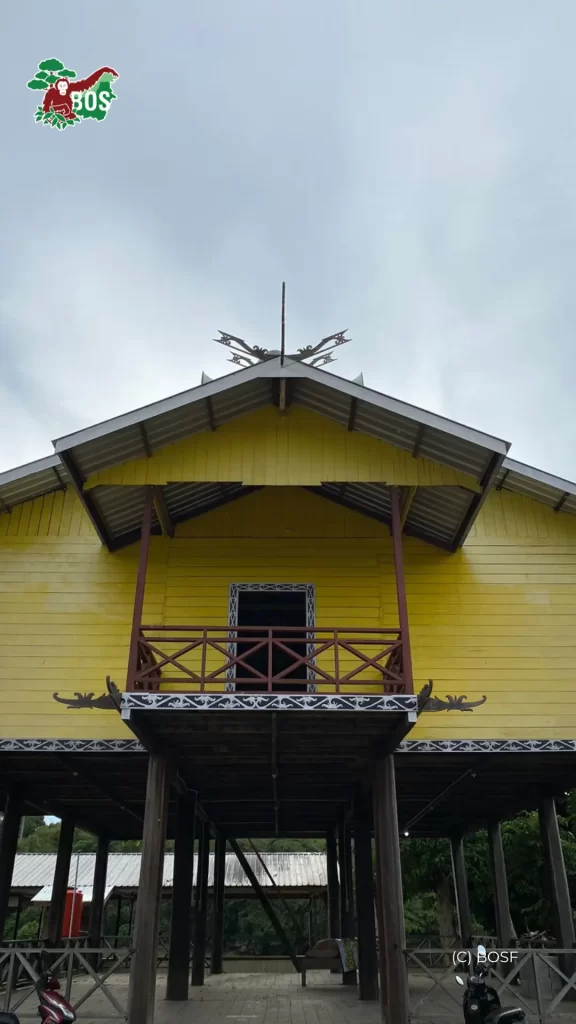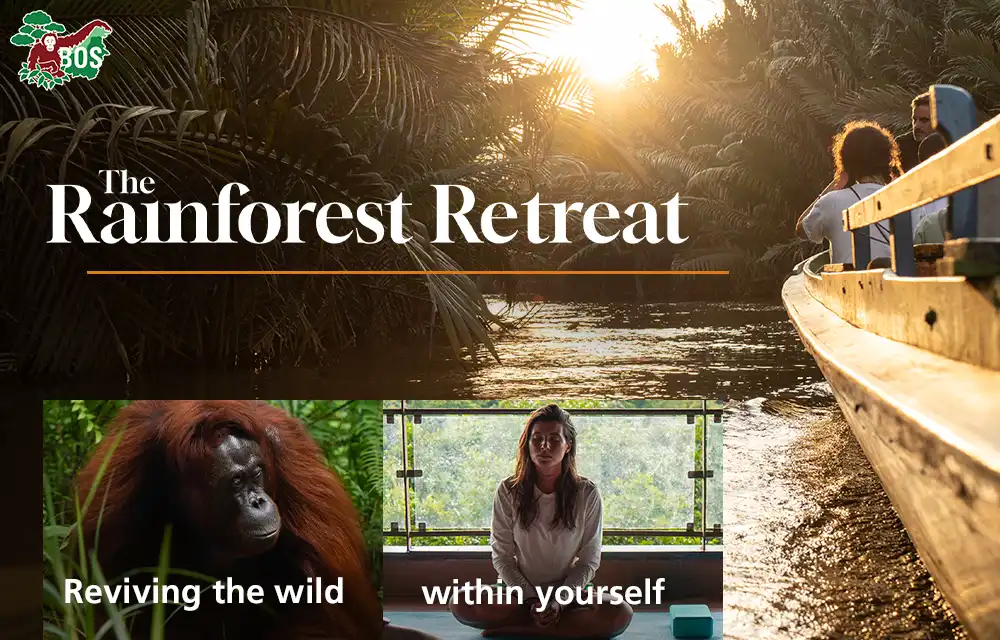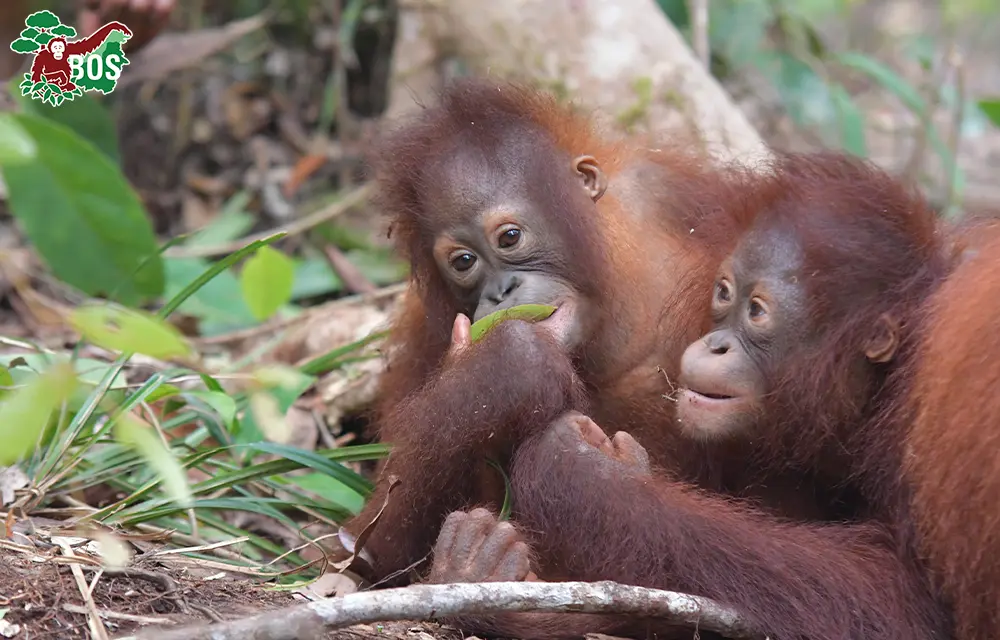The Dayak people are known for their traditional longhouses, which are still home to families all across Borneo. In the province of East Kalimantan, the Lamin traditional house is an important part of the Dayak culture and it holds significance for numerous sub-ethnic groups there, including the Wehea Dayak. The Lamin traditional houses sit on stilts and can be up to 300 metres long and 15 metres wide. This historic house is customarily built from Bornean ironwood, which now poses a problem as overexploitation by industrial timber companies has dwindled the numbers of these trees.

These buildings are not only strong but also beautiful. The tips of the roof and the ends of the building are adorned with the distinctive carvings of the Dayak people. The edges of the floors and doors are painted white and decorated with characteristic Dayak patterns.
The traditional house pictured here is a Lamin traditional house in the village of Nehas Liang Bing. It is situated in the middle of the residential area, with its back facing the Wahau River. Along the riverbank, there is an ironwood bridge and a pier, which can be accessed via a boardwalk next to the traditional house.

Unfortunately, due to a flood, mud severely damaged the bridge and pier, rendering both unusable for daily activities. However, the pier is still used on special occasions for traditional activities on the river, such as boat battles during the Lom Plai festivities.

Over time, the Lamin traditional house in the village has become dilapidated as the tropical conditions and time have taken their toll. Even though it may look unmaintained, the hardy ironwood of which it is made still stands strong.
There is another exceptional traditional building in the Nehas Liang Bing Village, the Great Wehea Dayak Traditional Institute. This building is still in use as a communal area for village youths. There they can gather, chat, and play traditional musical instruments. While these activities could be done elsewhere, opening up traditional buildings to the community fosters a closer connection with their unique culture and preserves their irreplaceable traditional knowledge for future generations.
Text by: Community Development Team at Muara Wahau, East Kalimantan
Will you help us rescue, rehabilitate and release orangutans back to freedom? Thank you!





